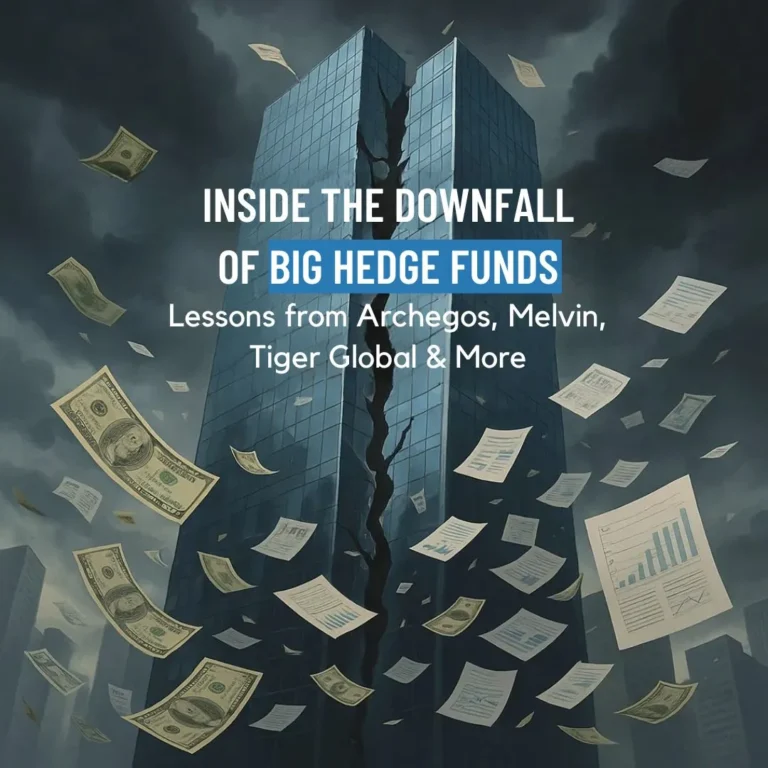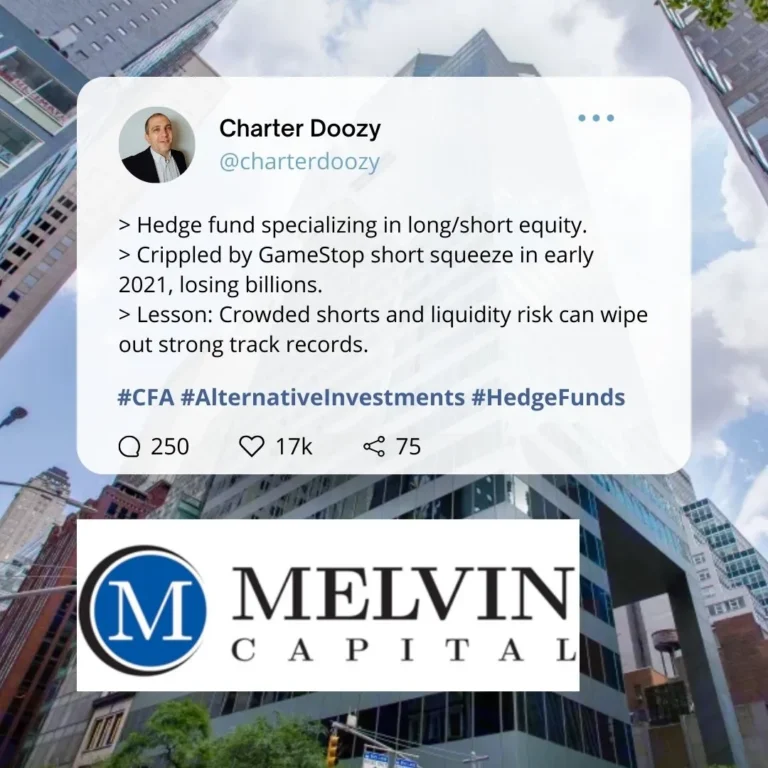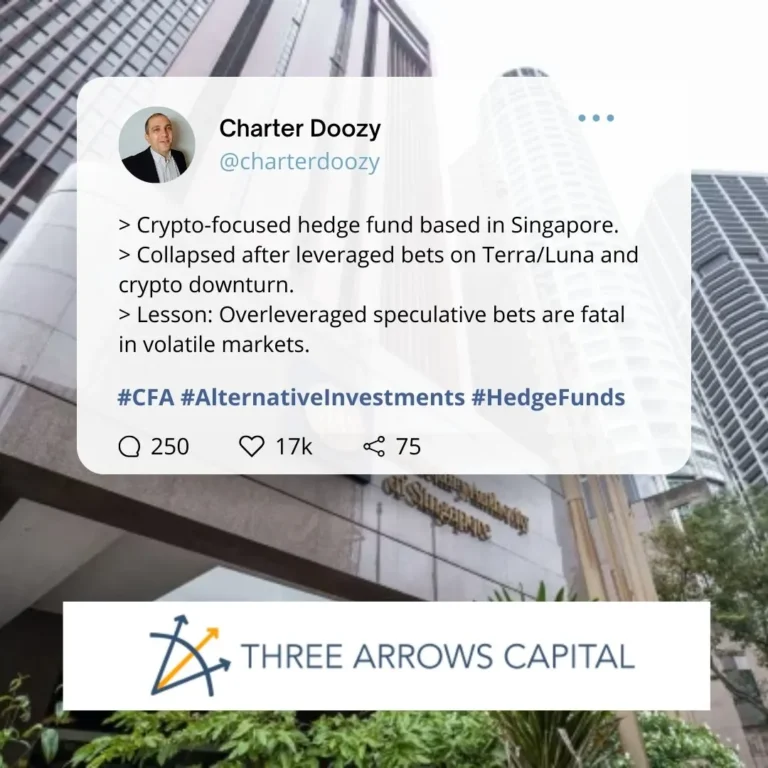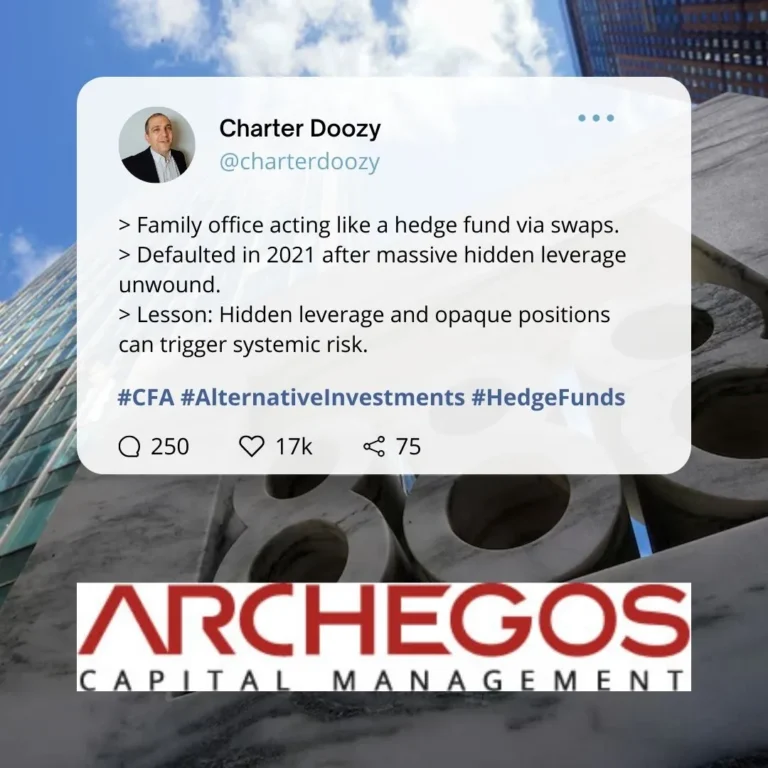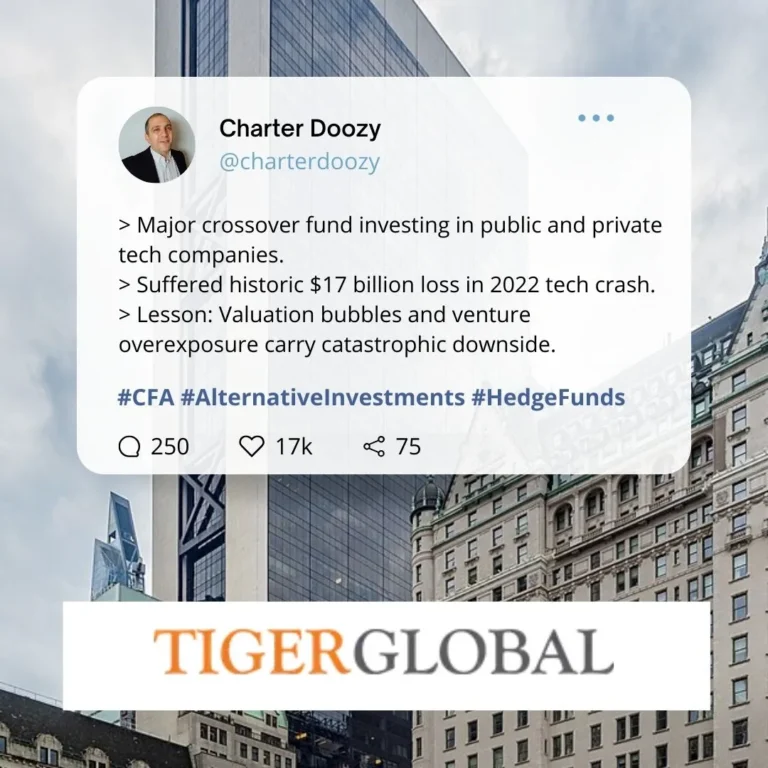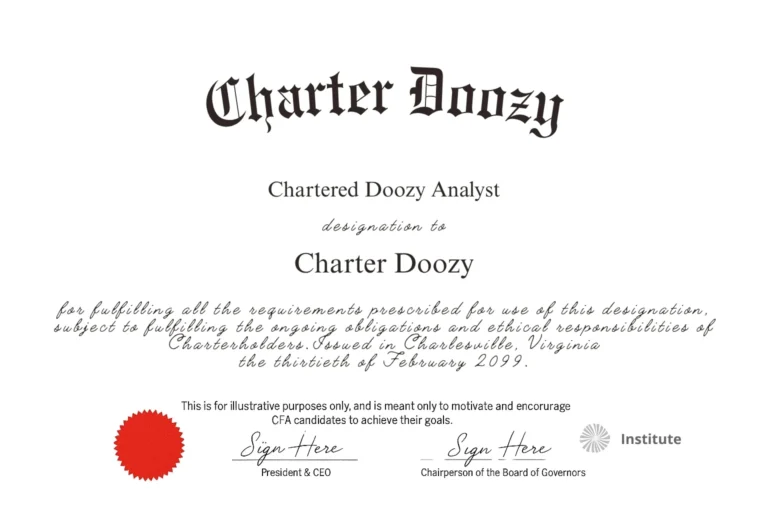The Mirage of Invincibility
At the height of their success, giant hedge funds often seem invincible – boasting elite management teams, massive pools of capital, and sophisticated trading strategies.
Yet time and again, history has shown that even the biggest names can unravel with stunning speed.
These blowups aren’t random.
They follow chillingly familiar patterns: leverage run amok, hidden risks metastasizing beneath the surface, liquidity mismatches, and hubris clouding judgment.
Recent years have given us a fresh batch of cautionary tales, from Archegos Capital Management’s sudden implosion to the slow-motion collapse of Tiger Global.
Beneath each downfall lies a series of avoidable mistakes that offer timeless lessons for investors, allocators, and finance professionals alike.
Interested in Learning About Other Hedge Fund Strategies?
Archegos: Leverage Without Transparency
In March 2021, Archegos Capital Management (a family office run by former Tiger Management analyst Bill Hwang) collapsed virtually overnight.
Using total return swaps, Archegos had amassed massive, concentrated positions in a handful of stocks while maintaining minimal disclosure.
The swaps allowed Archegos to leverage its capital 5x to 10x without publicly revealing the extent of its exposure.
When a few of its key positions began to fall, margin calls triggered a vicious spiral.
Prime brokers rushed to liquidate shares, prices cratered, and Archegos vaporized $20 billion in a matter of days.
Major banks including Credit Suisse, Nomura, and Morgan Stanley suffered multi-billion-dollar losses.

Lesson: Leverage magnifies hidden risks. When transparency is lacking, leverage becomes a ticking time bomb.
Melvin Capital: The Danger of Crowded Shorts
Melvin Capital became a household name for all the wrong reasons during the GameStop short squeeze of early 2021.
The fund had built an aggressive short position in heavily shorted small-cap stocks… positions that were publicly known.
A swarm of retail traders on Reddit’s WallStreetBets forum organized a buying frenzy, driving prices exponentially higher and forcing Melvin into massive, unsustainable losses.
Melvin required an emergency $2.75 billion bailout from Citadel and Point72.
Even then, the reputational damage proved fatal.
Melvin closed its doors in 2022.

Lesson: Crowded trades can become lethal. In today’s social media-fueled world, short positions carry existential reputational and financial risks.
Amaranth Advisors: Concentrated Risk in a Fragile Market
Go back to 2006, and Amaranth Advisors provides a classic example of one-sided risk.
The firm, once managing $9 billion, lost $6 billion in a single month due to massive, concentrated bets on natural gas prices.
As volatility spiked and positions moved against them, Amaranth had little room to maneuver.
Forced liquidation followed, devastating investor capital.

Lesson: Concentrated bets—even on “high conviction” ideas—can quickly spiral into catastrophic losses when markets move unexpectedly.
Three Arrows Capital (3AC): Illusions of Endless Liquidity
Crypto hedge fund Three Arrows Capital rose to fame during the 2020–2021 cryptocurrency boom, building enormous positions across Bitcoin, Ethereum, and high-risk crypto projects.
As crypto prices surged, 3AC borrowed heavily and expanded aggressively.
But when the market turned in 2022, leverage became their undoing.
Illiquid positions, margin calls, and counterparty exposures converged into a brutal collapse, triggering ripple effects across the broader crypto ecosystem.
Bankruptcy followed.
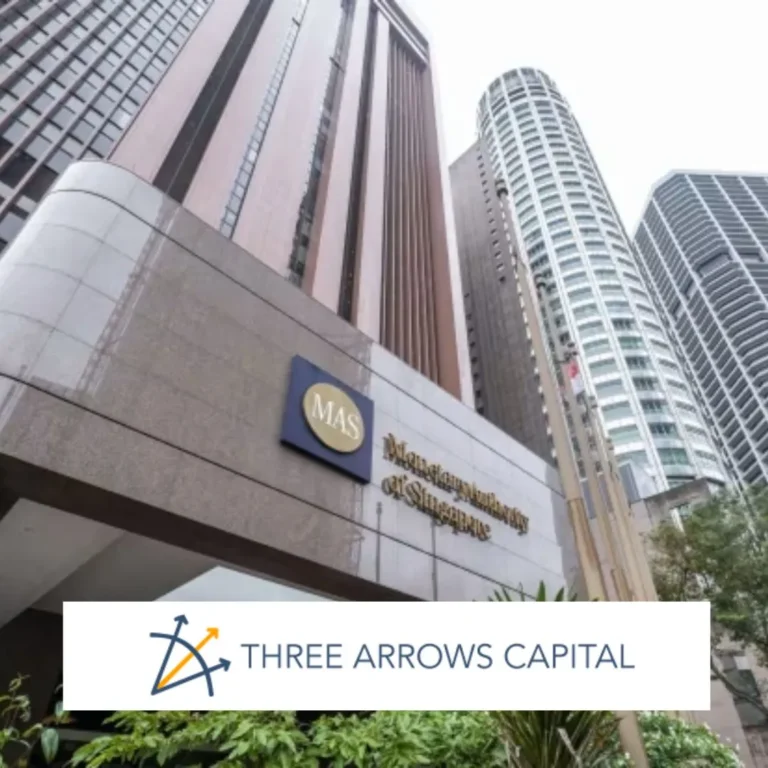
Lesson: In illiquid, volatile markets, leverage and overconfidence can be fatal. Liquidity assumptions must be brutally realistic.
Tiger Global: When the Market Cycle Turns
Tiger Global was once hailed as the king of technology investing.
But between 2021 and 2022, the fund lost nearly 60% of its public equity portfolio value.
Aggressive bets on high-growth tech stocks (companies that thrived in a low-interest-rate environment) collapsed as rates surged, valuations compressed, and investor sentiment turned sharply risk-averse.
Tiger’s private equity portfolio also faced valuation pressures, but private asset markdowns tend to lag public markets, creating an illusion of better performance for a time.

Lesson: Market regimes change. Strategies that thrive in one environment can become toxic in another if managers fail to adapt.
Common Threads Across the Blowups
Despite differences in strategies and sectors, the downfall of major hedge funds often shares common DNA:
Excessive leverage: Amplifying returns also amplifies risks.
Concentration risk: Betting heavily on a few positions magnifies downside potential.
Liquidity mismatches: Holding illiquid assets while promising liquidity to investors invites disaster.
Complacency: Past success often breeds overconfidence and underestimation of tail risks.
Poor risk management: Sophisticated models can give a false sense of security if they are based on flawed assumptions.
Why It Matters for Every Investor
Understanding these collapses isn’t about schadenfreude. It’s about sharpening your judgment. When evaluating any investment manager—or your own strategies—ask tough questions:
Where are the hidden concentrations?
How is leverage really being used?
Are liquidity assumptions realistic?
How would the portfolio behave under extreme stress?
In finance, the seeds of destruction are often planted in the periods of greatest success. Staying humble, skeptical, and disciplined is not optional—it’s survival.
Key Takeaways
Inside the Downfall of Big Hedge Funds:
Success hides risk until it explodes.
Leverage + opacity = disaster waiting to happen.
Crowded trades can kill faster than markets correct.
Liquidity mismatches are portfolio landmines.
Past success is not a shield against future failure.
Understand the risks. Question the hype. Stay humble.
